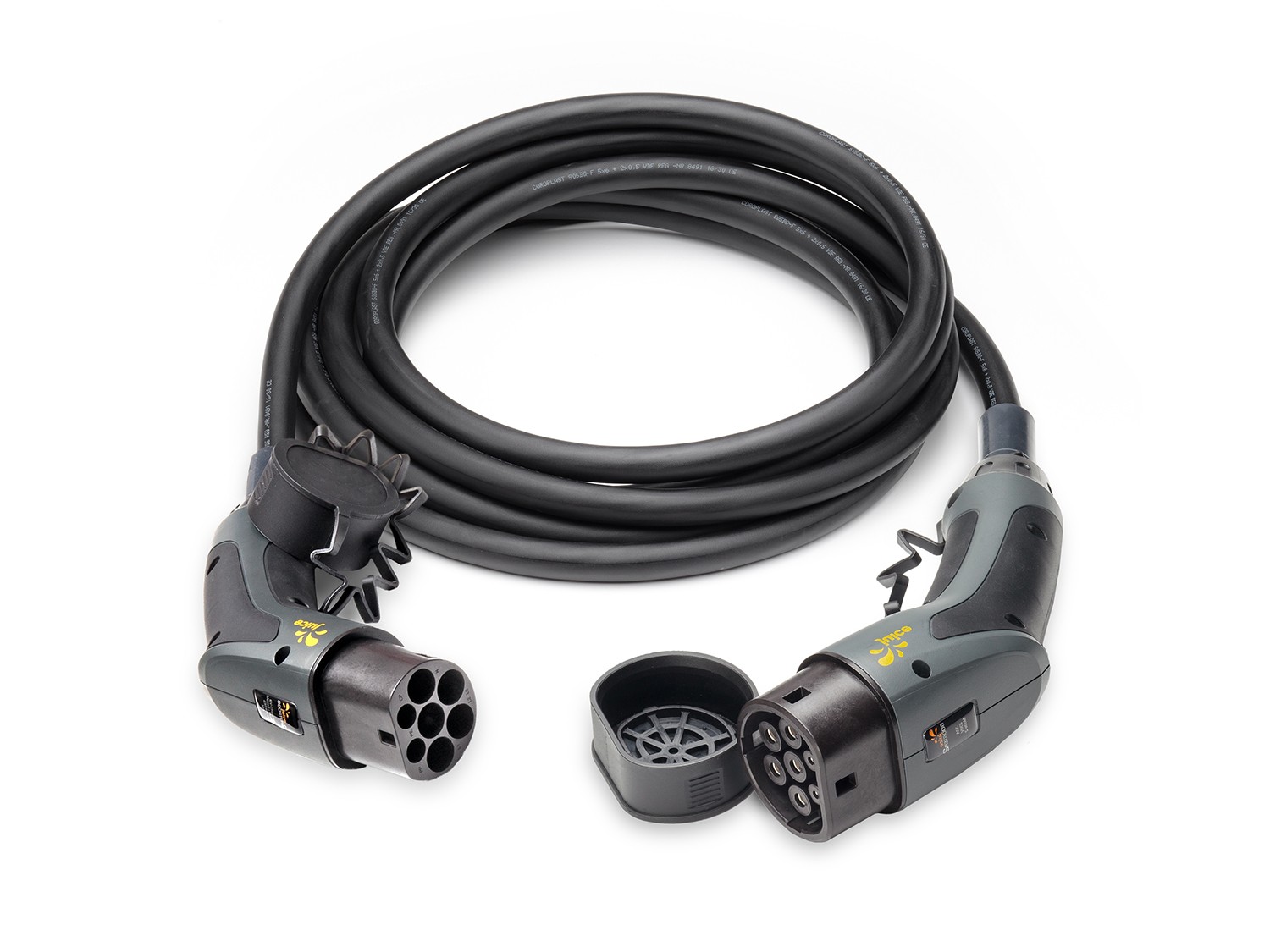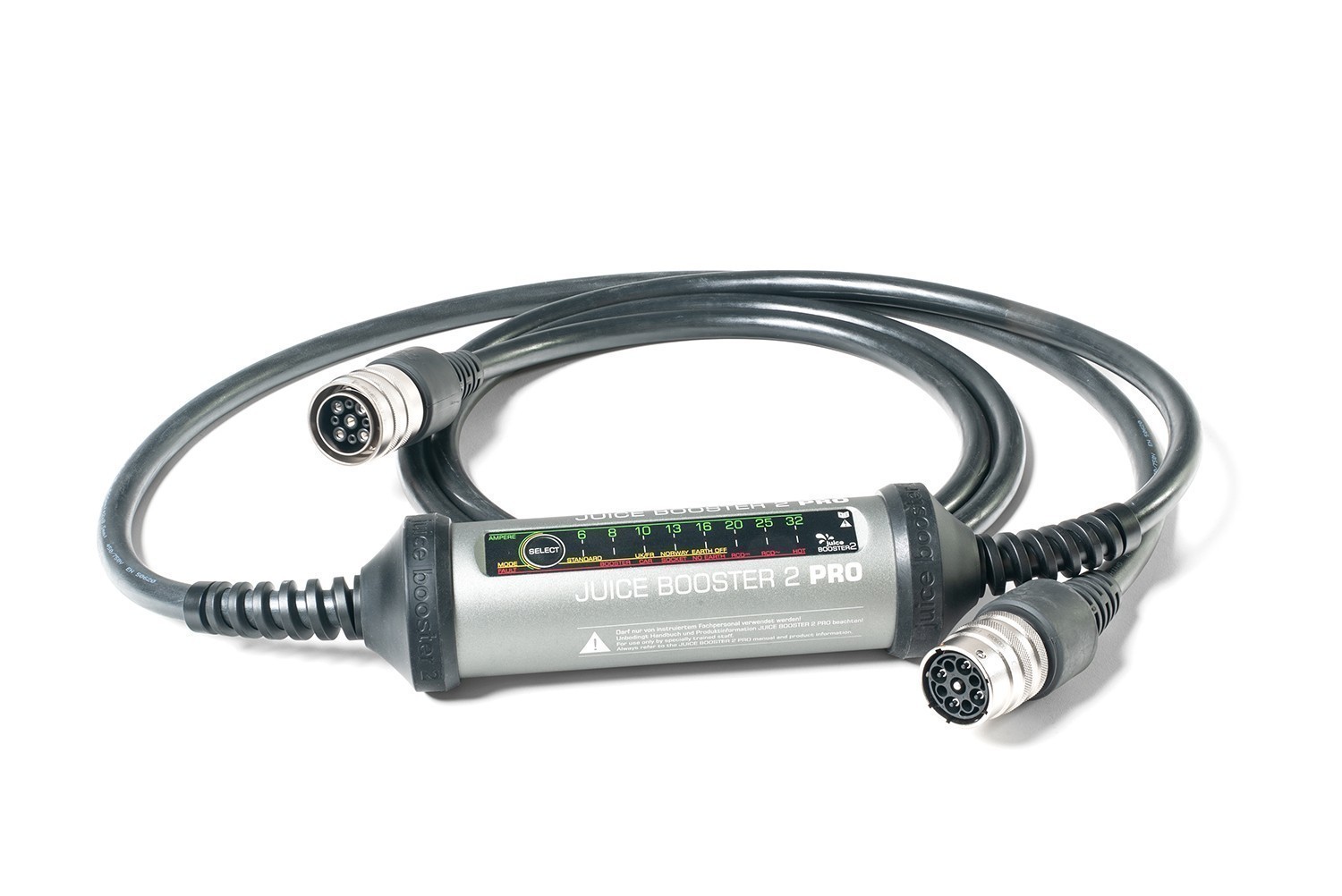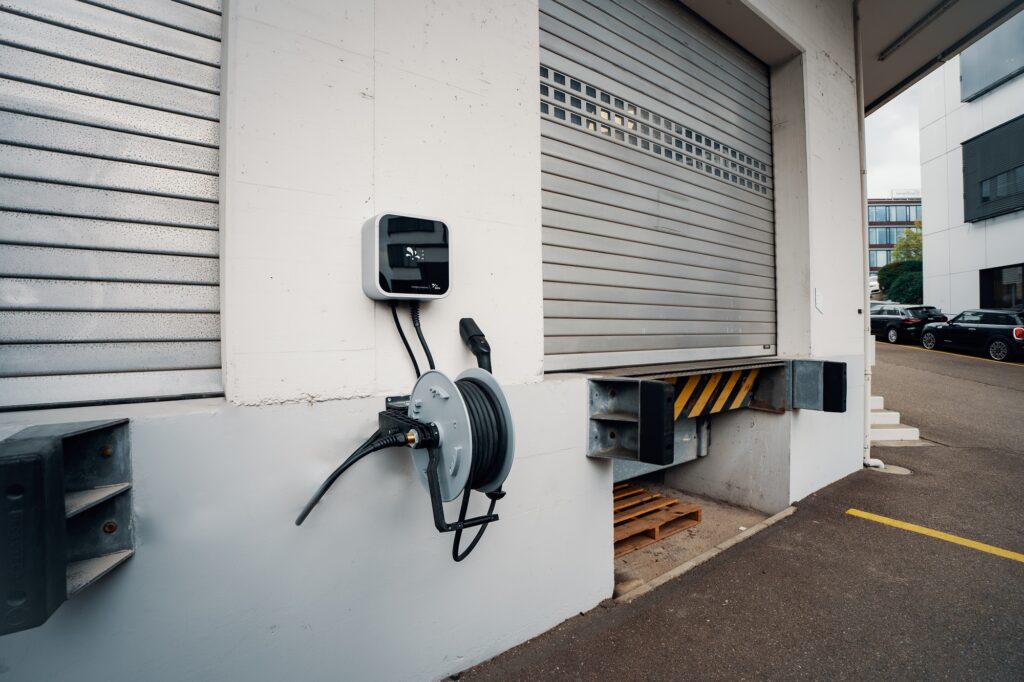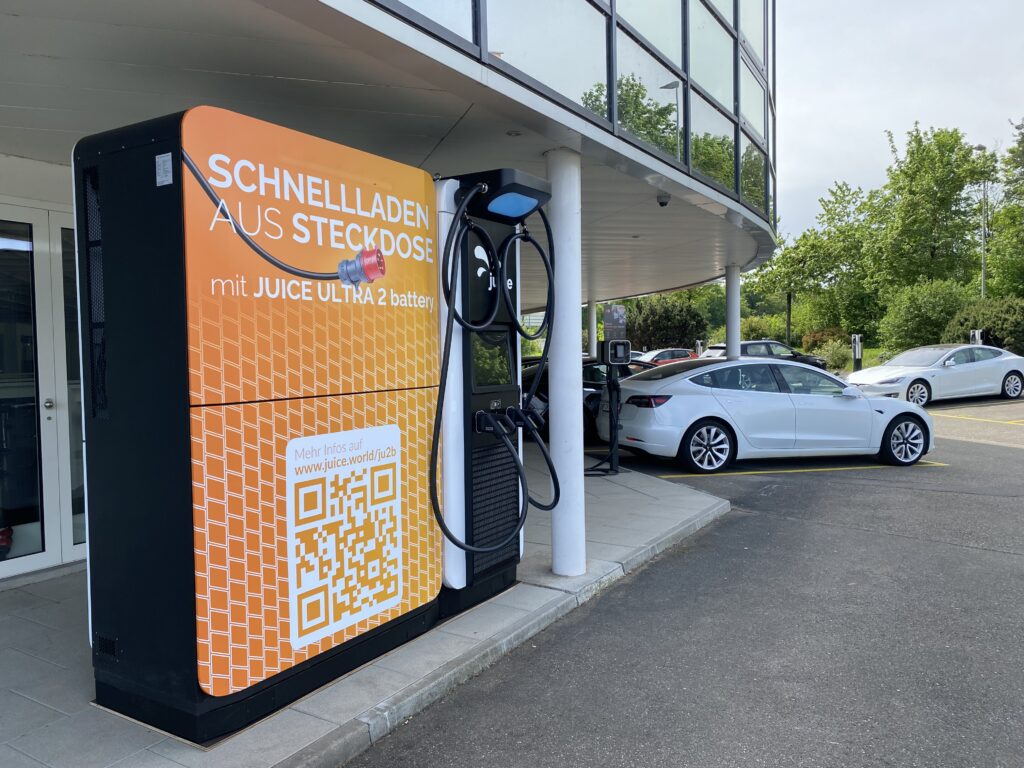Electromobility is a model for today, not just for the future
For more than seven years, Juice Technology AG has continually demonstrated its competence and extensive know-how, bringing a range of innovative and high-quality products and solutions to market, many of which were industry firsts. The company's focus is on driving the development of e-mobility, actively shaping the market to the benefit of consumers, and offering electric vehicle users the best charging solutions at all times.
It comes as no surprise that this successful company has made a global name for itself with its reliable technology, both among end customers and with the major automobile manufacturers.
Status quo – Where does Europe stand when it comes to e-mobility?
In 2021, the proportion of electric vehicles in Europe was around 20% of new car sales. The market share for electric vehicles (including BEV, PHEV and hybrid) rose from 8% in 2019 to 38% in 2021 in the five biggest European markets (France, Germany, Italy, Spain and Great Britain). In September 2021, the Tesla Model 3 became the first purely electric vehicle to be the best-selling vehicle in Europe (across all drive types). While registration figures show that the market for diesel and petrol drives is in decline, the proportion of “plug-in vehicles” has been seeing double-digit growth for some time.
Based on these trends, new registrations of electrified vehicles (BEV and PHEV) in Europe will exceed those of diesel and petrol vehicles in the first half of 2023. By 2025, electric vehicles will reach the tipping point at which they become significantly more attractive than the outdated combustion engine models – both economically and in direct performance comparisons – in practically all vehicle segments and classes. Ranges are increasing, charging times are coming down ever more sharply, and charging options in public and private spaces are becoming more and more a matter of course. Thanks to increasing competition, falling prices and a wider selection of products, these vehicles will also become increasingly dominant in the high-volume moderate and low price segments.
Development of charging infrastructure in Europe
According to futurologist Lars Thomsen, several trends are emerging in the charging infrastructure. For AC charging, the three-phase 11 kW charger is becoming the most common solution in Europe and is powerful enough to fully charge batteries overnight with 80 kWh or more. In the DC sector, the CCS connection with a charging capacity of up to 350 kW has become the standard along long-distance routes. 50 to 100 kW installations are the preferred choice for public car parks, in cities or at points of interest.
By 2024, we can expect that practically every motorway service area in Europe will have fast charging connections, which means enormous investments for the operators. These investments will be passed on to the user in the form of very high prices per kWh, unless users conclude a premium contract with the respective operator along with a monthly base fee. According to current forecasts, three to five separate networks will take shape across Europe, and these will compete for long-term customer loyalty, similar to mobile operators today.
Solidifying its market dominance with a global presence
Signs are looking good for Juice to expand its already strong presence in Central Europe and solidify its position in the market. While the young company's focus is still on Europe, especially the DACH region, it is gaining ever more market share in France, Spain, Italy and in regions of Northern Europe. However, we would do well to remember that not all markets develop in the same way. Political will certainly plays a role, but private initiatives also have an impact on the development of electromobility that should not be underestimated.
France: Government-driven mobility transformation
France has committed to banning the sale of internal combustion engine vehicles by 2040 in favor of fully electric or hydrogen vehicles. The national association for the development of electric mobility (Avere-France) counts 786,000 e-cars in France, of which 315,000 were registered in 2021. This represents a growth of 62% compared to 2020, but more importantly +355% compared to 2019. Led by sales of the Tesla Model 3 and Renault Zoe, electric vehicles now account for over 14% of the French car market, a record high.
In his “France 2030” plan, President Emmanuel Macron aims to have two million electric vehicles (plug-in hybrids or BEVs) on the road and seven million charging points installed in France. Currently, 50% of the French population is already willing to switch to electric vehicles. One prerequisite to accelerating the transformation is to further expand the fast-charging network, especially at transport hubs and along highways. Another is to make AC charging options available to allow vehicles to be easily charged at home or at work.
“Mobile charging is an indispensable technology that fills the gaps in the charging network while providing electric mobility enthusiasts with maximum reliability and flexibility,” adds Maurizio Ventura, CSO at Juice Technology and the person responsible for building up the international sales team.
Iberia: Accelerating the transition to e-mobility
Political and economic signals are also pointing in the right direction in Spain, where the government has set an ambitious goal to reach 250,000 electric vehicles by 2023. The proportion of electric vehicles in Spain is steadily increasing, although with a certain sluggishness compared to other European countries. The same is true of the charging infrastructure: it continues to grow, but much more slowly than in other European markets. This increase is mainly due to the increase in the number of AC charging points, which have spread more quickly than fast-charging points.
"For the electric vehicle transformation to become a reality, we need smart, efficient charging infrastructure that makes life easier for drivers,” explains Christoph Erni, founder and CEO of Juice Technology AG. “You cannot have the first without the second. In particular, there needs to be a focus on charging infrastructure outside of metropolitan areas, especially in places where people live and work.”
In Portugal, sales figures are also rising, just under 50% year over year (2020 to 2021). And that is thanks in part to a business model that other countries could definitely learn from. The electromobility networks of many countries are highly segmented – for the most part, each charging station operator has its own private network with proprietary charging solutions. Therefore, there is no incentive for charging station manufacturers to develop devices that can be easily integrated into all systems.
Christoph Erni says: “Isolated solutions do not advance electromobility. It’s a bit cheeky of the charging network operators to expect you to carry around five or ten different charging cards just to get electricity for your car. What’s needed instead are universal products that are user-centric.”
Just a single charging card for all charging station operators – what sounds like a pipe dream in most European countries is already becoming reality in Portugal. Here, various providers have joined forces under the umbrella company Mobi.E, S.A. The biggest benefit to users is that they can use their energy provider’s card or app across the entire network, without any reductions in service quality. However, this model requires charging stations which can be seamlessly integrated into the network – such as the JUICE CHARGER me.
Italy: Availability of affordable electric cars is a key factor
Consumer interest in Italy is growing, but the real tipping point is expected in 2024, when many new battery electric vehicle (BEV) models will hit the market at more affordable prices. A study conducted by Motus-E, a non-profit association for the expansion of electromobility, with the support of the European Climate Foundation, suggests that the transformation will be accelerated by subsidies and increased supply, especially of affordable models.
Another factor affecting demand for electric cars is the charging network: 77% of respondents said it was important to have access to charging stations in the places they visit every day, while 72% said they would travel long distances in their electric car if fast-charging stations were available on highways and major arteries. On average, consumers consider access to private charging stations to be 50% more desirable than public charging stations, and 65% of respondents say they would only buy an electric car if they had the ability to charge it at home. So, as in other regions, private AC charging infrastructure plays a fundamental role.
UK and the Nordics: Focused and in the lead
The UK, on the other hand, is focusing on the development of public charging infrastructure and aims to create a total of 300,000 public charging points for electric cars by 2030. Their “Electric Vehicle Infrastructure” strategy is backed by £1.6 billion and aims to expand the UK’s charging network nationwide. Access to reliable charging infrastructure, both at home and on the road network, is an important prerequisite for public acceptance of e-vehicles.
The Nordic countries (Norway, Sweden, Iceland, Finland and Denmark) continue to lead the global rankings for electrification. This is due not only to government incentives and subsidies that encourage car purchases through discounts on registration, reduced vehicle taxes, the elimination of road tolls and free parking in most cities, but also to the fact that electricity is enormously cheap in these countries.
In fact, Norway continues to be number one when it comes to e-mobility. As of September 2021, electric vehicles accounted for 78% of total sales in the automotive market. If hybrids and plug-in hybrids are included, the total share of electric vehicles is as high as 92%.
“There is no doubt that the Nordic countries, led by Norway, are setting the pace for electromobility in Europe,” adds Christoph Erni. “The fact that these countries have achieved such positive figures will serve as motivation for the others, because achieving the climate targets set by the European Union will only be possible if we have a consistent and solid strategy in all countries. Only then will Europe continue to play a key role in global electromobility.”
But how do things look outside Europe when it comes to electrification?
China leads the way in BEVs and the USA trails behind
China has reached the point where it is able to enter the European and US markets with new (very attractive) electric vehicles and PHEVs that stand out from the competition. Lars Thomsen expects that there will be at least six Chinese brands with multiple models in both markets by 2025. At the same time, this has added further fuel to the US market for electric vehicles, which was already growing rapidly anyway (+190% compared to the previous year). China will remain the largest BEV market in the world until 2026.
“China is an enormous market and is demonstrating strong growth, particularly in the electromobility sector,” says Christoph Erni. “It was therefore only a matter of time before we would want to strengthen our position in this region with a flexible and diverse team on the ground.” Juice’s decision to enter the Chinese market at the beginning of 2021 was exactly the right one. With the establishment of its subsidiary in Hangzhou, the young company reached an important milestone in its history. This location was not chosen at random. After all, China plays a leading role in electromobility. Around half of the electric cars sold worldwide are on the road in the most densely populated country in the world. And demand for mobile charging infrastructure is equally high.
The US market – currently lagging behind in this comparison – is anticipating a boost for EVs and for charging infrastructure beyond the previous hotspots in the metropolitan regions. In particular, the simultaneous entry of multiple players offering pickup trucks into the key US car market will facilitate a jump of more than 15% in new registrations in the USA. Depending on the availability of batteries and vehicles, the proportion of EVs among new car sales will rise to at least 40% by 2025, even in the USA. In the same period, the volume of EV charging technology on the US market could increase twenty-fold in comparison with today.
Christoph Erni: “Politics and the economy in the USA are now sending the right signals. For example the government’s service fleet, comprising 645,000 vehicles, is now being electrified. And major automobile manufacturers like General Motors are continuing to drive the mobility revolution and are planning complete electrification of their vehicles by 2035.”
It is therefore not surprising that shortly after expanding into the Far East, Juice also expanded its presence into North America. Since the company is pursuing long-term goals, they needed to choose their timing carefully. With an established customer base in the USA, they are now increasingly turning their focus to their strategic business.
























